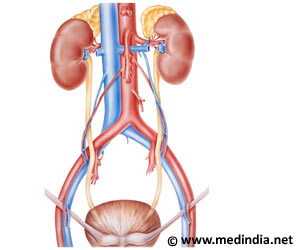similar to those found in their owners, a Portuguese study found.
The finding underlines the importance of including pet-owning households in programs to reduce the spread of antimicrobial resistance.
Antibiotic-Resistant “Superbugs”
Antibiotic resistance is reaching dangerously high levels around the world. Drug-resistant infections kill an estimated 700,000 people a year globally and, with the figure projected to rise to 10 million by 2050 if no action is taken, the World Health Organisation (WHO) classes antibiotic resistance as one of the greatest public health threats facing humanity.
Advertisement
Dogs, cats, and other pets are known to contribute to the spread of antibiotic-resistant pathogens that can cause human disease.
Juliana Menezes and colleagues from the Antibiotic Resistance Lab at the Centre of Interdisciplinary Research in Animal Health, Faculty of Veterinary Medicine, University of Lisbon, Portugal wanted to find out if pets being treated with
The researchers tested fecal samples from dogs and cats and their owners for Enterobacterales (a large family of bacteria which includes E. coli and Klebsiella pneumoniae) resistant to common antibiotics.
They focused on bacteria resistant to third-generation cephalosporins (used to treat a broad range of conditions, including meningitis, pneumonia, and sepsis, they are classed among the most critically important antibiotics for human medicine by the World Health Organisation) and carbapenems (part of the last line of defense when other antibiotics have failed).
Crucial Step in Containing the Transmission of Superbugs
The prospective longitudinal study involved five cats, 38 dogs, and 78 humans from 43 households in Portugal and seven dogs and eight humans from seven households in the UK.
In Portugal, one dog (1/43 pets, 2.3%) was colonized by a strain of multidrug-resistant OXA-181-producing Escherichia coli. OXA-181 is an enzyme that confers resistance to carbapenems.
Three cats and 21 dogs (24/43 pets, 55.8%) and 28 owners (28/78, 35.9%) harboured ESBL/Amp-C producing Enterobacterales. These are resistant to third generation cephalosporins.
In eight households, two houses with cats and six with dogs, both pet and owner were carrying ESBL/AmpC-producing bacteria.
In six of these homes, the DNA of the bacteria isolated from the pets (one cat and five dogs) and their owners were similar, meaning these bacteria were probably passed between the animals and humans. It is not known whether they were transferred from pet to human or vice versa.
In the UK, one dog (1/7,14.3%) was colonized by multidrug-resistant E. coli producing NDM-5 and CTX-M-15 beta-lactamases. These E. coli are resistant to third-generation cephalosporins, carbapenems, and several other families of antibiotics.
ESBL/AmpC-producing Enterobacterales were isolated from five dogs (5/7, 71.4%) and three owners (3/8, 37.5%).
Assessing Antibiotic Resistance in Dogs and Cats
In two households with dogs, both pet and owner were carrying ESBL/AmpC-producing bacteria. In one of these homes, the DNA of the bacteria isolated from the dog and owner was similar, suggesting the bacteria probably passed from one to the other. The direction of the transfer is unclear.
All of the dogs and cats were successfully treated for their skin, soft tissue, and urinary tract infections.
The owners did not have infections and so did not need treatment.
Ms. Menezes, a Ph.D. student, says: “In this study, we provide evidence that bacteria resistant to a third generation cephalosporins, critically important antibiotics, are being passed from pets to their owners.
“Dogs and cats may aid the spread and persistence of such bacteria in the community and it is vitally important that they are included in assessments of antimicrobial resistance.
“Owners can reduce the spread of multidrug-resistant bacteria by practising good hygiene, including washing their hands after collecting their dog or cat’s waste and even after petting them.”
Source: Eurekalert



